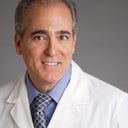Posted underBreast Lift q&a
Do anchor lifts scar Asian skin more? Should I expect keloid scars again? (photos)
I had some keloid scars around aereola with lift #1, and I want to do a full anchor lift now. Should I expect keloid scars again?
Answers (10)
From board-certified doctors and trusted medical professionals
Dr. Robert J. Spies, MD

Dr. Robert J. Spies, MD
Board Certified Plastic Surgeon
Answer
Dr. Raffy Karamanoukian, MD, FACS

Dr. Raffy Karamanoukian, MD, FACS
Board Certified Plastic Surgeon
Answer
Dr. David C. Yao, MD, FACS

Dr. David C. Yao, MD, FACS
Board Certified Plastic Surgeon
Answer
Dr. Urmen Desai, MD, MPH, FACS

Dr. Urmen Desai, MD, MPH, FACS
Board Certified Plastic Surgeon
Answer
Dr. Gary M. Horndeski, MD

Dr. Gary M. Horndeski, MD
Board Certified Plastic Surgeon
Answer
Dr. Daniel Barrett, MD

Dr. Daniel Barrett, MD
Board Certified Plastic Surgeon
Answer
Dr. Connie Hiers, MD, FACS
Dr. Connie Hiers, MD, FACS
Board Certified Plastic Surgeon
Answer
Dr. Matthew A. DelMauro, MD, FACS
Dr. Matthew A. DelMauro, MD, FACS
Board Certified Plastic Surgeon
Answer
Dr. Jeffrey Nelson, MD
Dr. Jeffrey Nelson, MD
Board Certified Plastic Surgeon
Answer
Answered on Mar 27, 2019
Answer
More Breast Lift Questions
See all Breast Lift Q&AWE SEND PRETTY
EMAILS
What’s trending? Who’s turning heads? Which TikTok myths need busting? We’ve got you. No fluff, no gatekeeping—just real talk. Get our free, unfiltered newsletter.